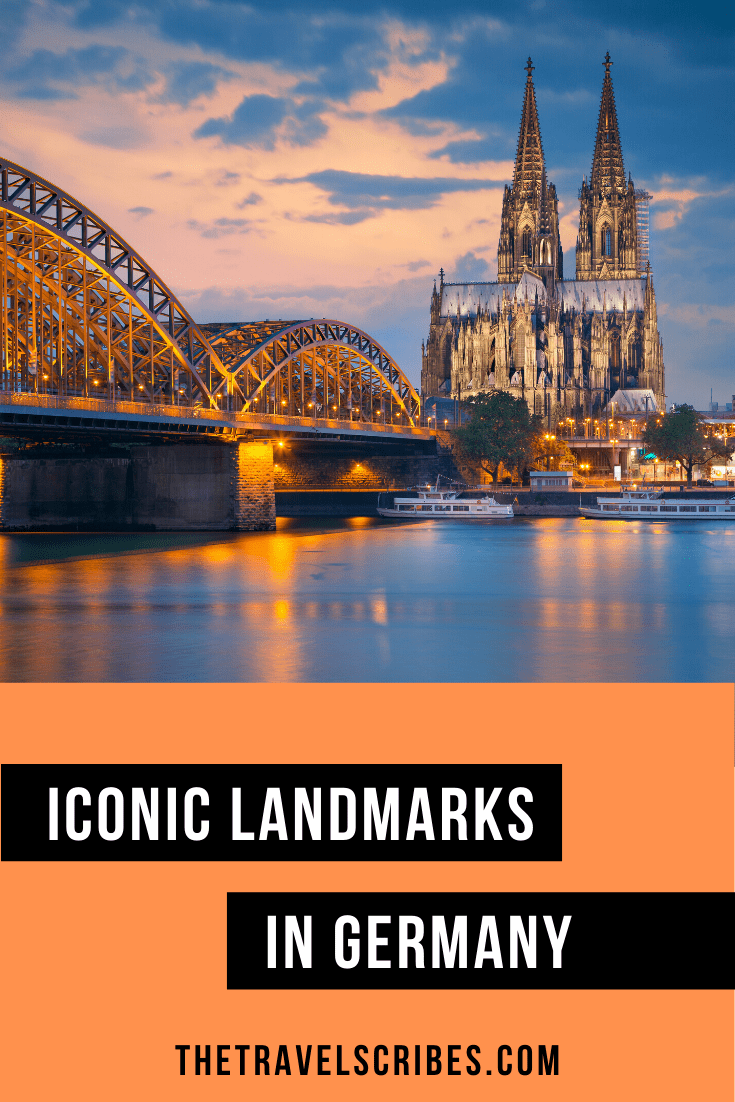For some reason Germany seems to fall a little behind the likes of the UK, France, Spain and Italy when it comes to the top destinations in Europe. And quite frankly for the life of us, we can’t work out why. We were lucky enough to call two German cities, Bonn and Cologne, our home for several years but even while living there we didn’t explore the city near enough. So, to help us cover the key must-see landmarks in Germany, we’ve asked the some of the world’s leading travel bloggers to count down Germany’s most iconic buildings and famous landmarks… … so read on to see what has made the list!
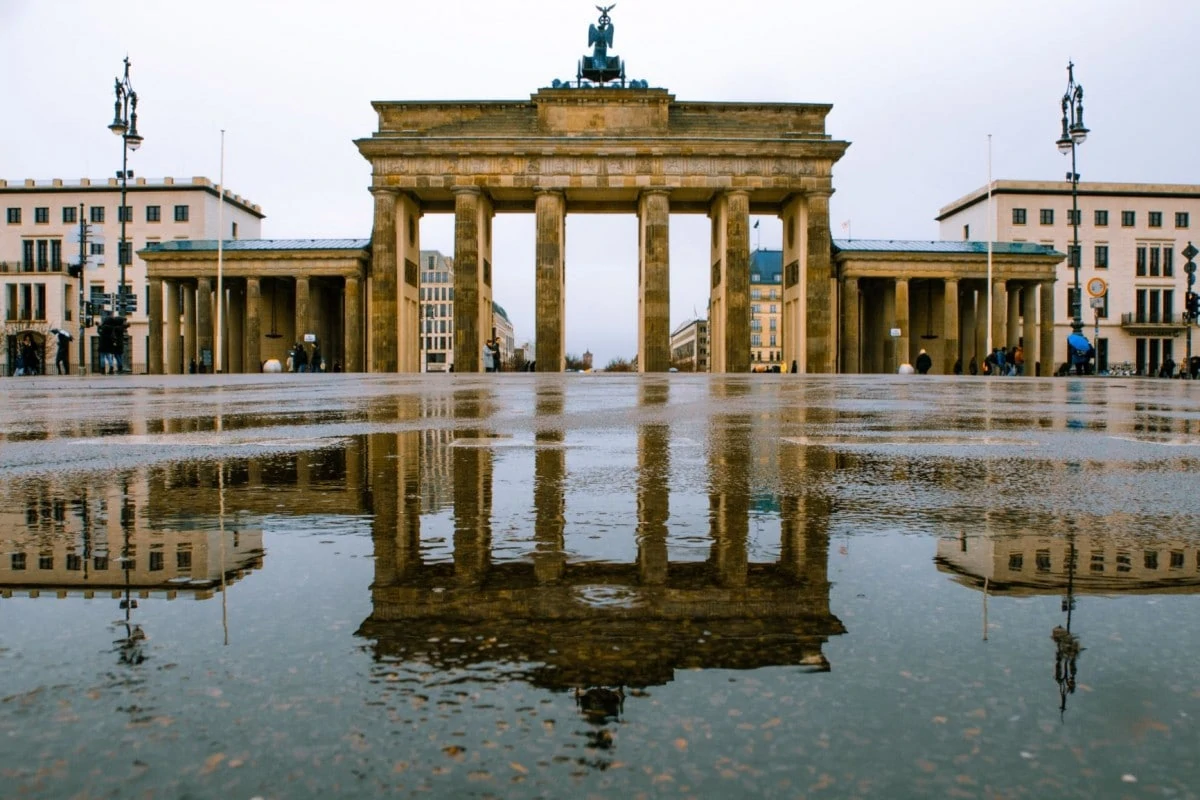
Read next: Our ultimate hidden gems in Germany!
Skip ahead
Our top 10 favourite landmarks in Germany
- Neuschwanstein Castle, Bavaria
- Cologne Cathedral
- East Side Gallery, Berlin
- Bastei Bridge, Saxony
- Elbphilharmonie Concert Hall, Hamburg
- The Reichstag, Berlin
- Marienplatz, Munich
- Hohenzollern Castle, Baden-Württemberg
- Rathaus, Bremen
- Brandenburg Gate
Neuschwanstein Castle, Bavaria
Explored by Krisztina from She Wanders Abroad
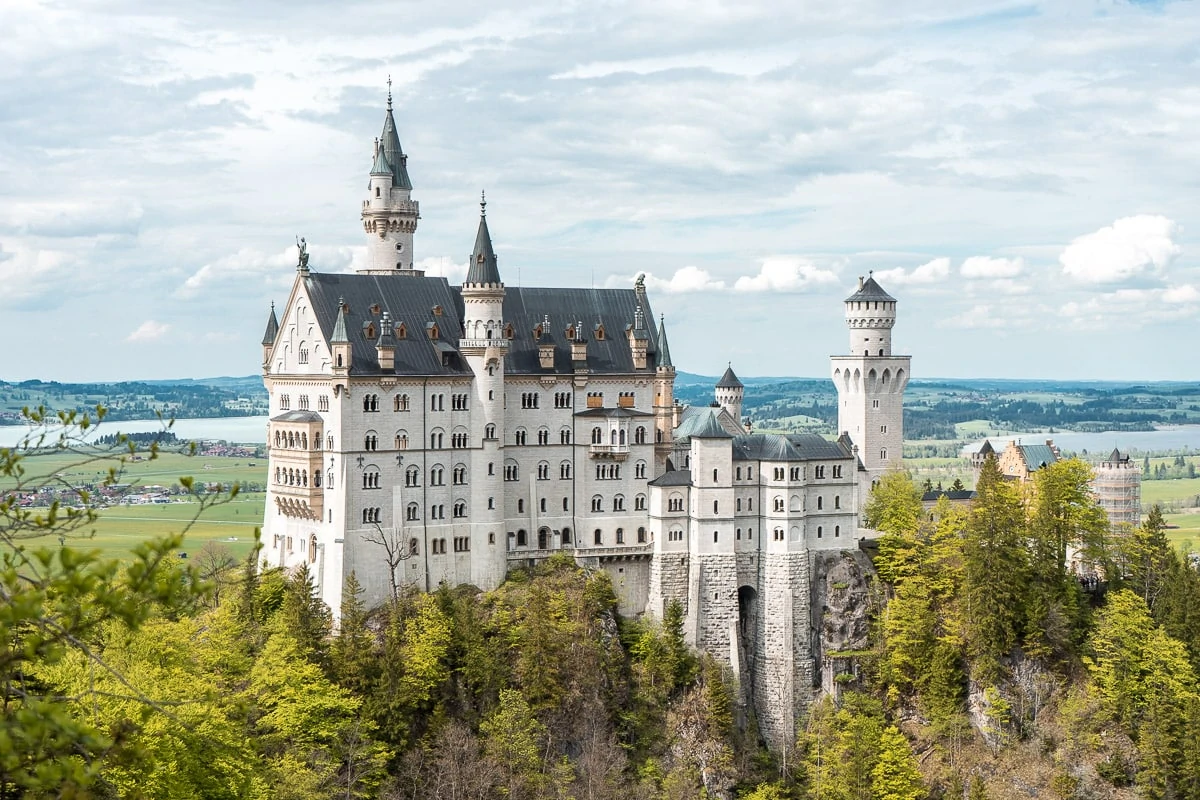
Located in the scenic Bavaria region of Germany, Neuschwanstein Castle is one of the most famous castles in the world. Millions of people flock to the castle every year to see the iconic landmark that inspired Walt Disney to create both Cinderella’s Castle in the 1950 movie and the Sleeping Beauty Castle in Disneyland. Even if you’re not a Disney fan, visiting the Neuschwanstein Castle will be an unforgettable experience!
Since it’s only a 2 hour drive from Munich, you can easily visit the castle in a day trip but it’s best to stay for at least 1-2 nights in either Hohenschwangau (where the castle is located) or the nearby Schwangau.
Built by King Ludwig II of Bavaria between 1869 and 1886, the Neuschwanstein Castle is nestled in the foot of the Bavarian Alps on top of a hill, so you will need to walk up on a steep road for around 1.5 km to reach the castle. Don’t worry, the hike is quite easy and it takes only 30 to 40 minutes depending on your fitness level.
There are well established hiking trails around the castle and it’s worth taking a detour to the Mary’s Bridge (Marienbrücke), which is known as one of the best viewpoints of Neuschwanstein Castle. You can also continue hiking further up from the castle to have a panoramic view over the whole area.
Hiking around the castle is completely free, although if you want to enter the Neuschwanstein Castle you need to pay 13 EUR (14.50 USD/11.50 GBP) for an adult ticket. Since it’s one of the most popular places in Germany you should definitely reserve your ticket in advance! It’s important to note that you can’t buy a ticket at the castle, only in the Ticketcenter in Hohenschwangau.
Think you know your landmarks? Then why not check out these famous landmark quiz questions.
Cologne Cathedral
Explored by Lee from The Travel Scribes
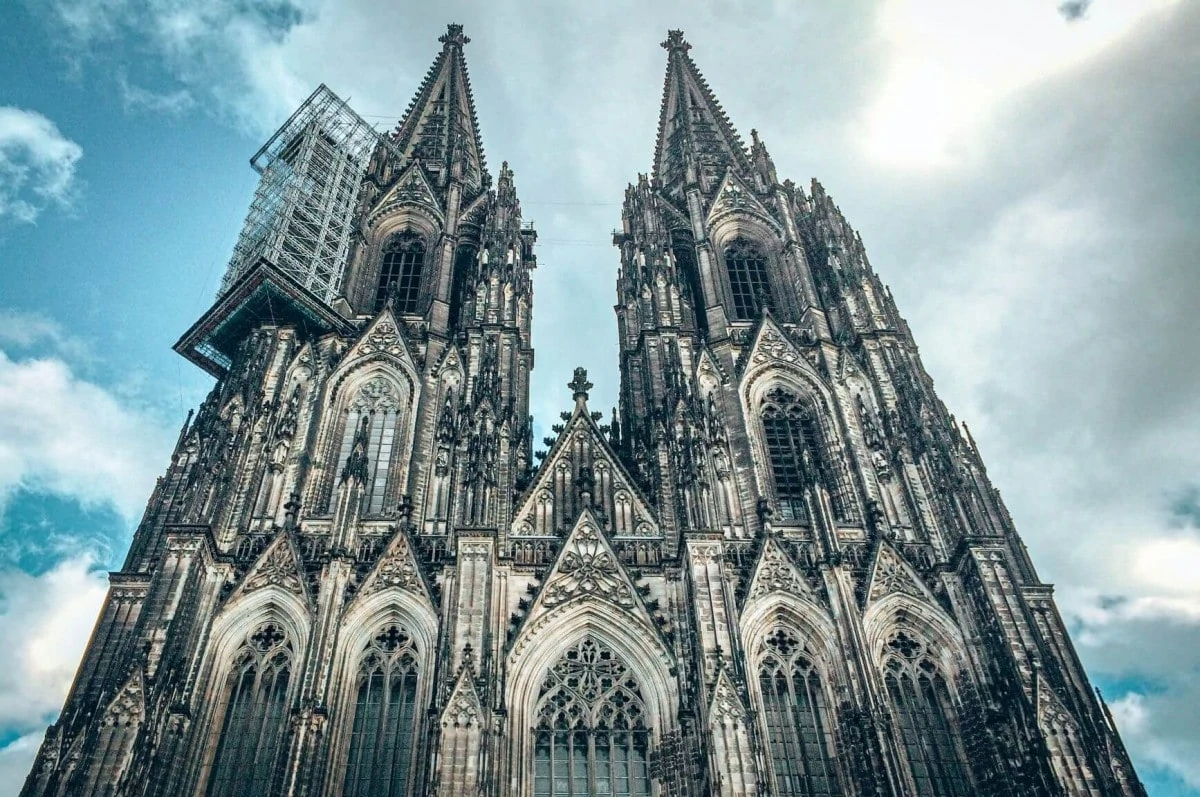
You might not expect it but the Cologne Cathedral (Kölner Dom) is the most visited tourist attraction in all of Germany!
The ‘Dom’, as its affectionately known, attracts visitors from far and wide, keen to see this soaring gothic structure which has two entries in the record books: the tallest twin-spired church in the world and the second tallest church in all of Europe. Locals might also fill you in on a slightly more sombre claim to fame, in that the Dom was one of the only buildings that survived the bombings in World War II, as the pilots from the Allied forces used it as a landmark for their positioning.
While construction of this famous German landmark started back in the 13th century it was only completed in 1880, standing unfinished for many decades. Today its definitely complete although quite often you’ll find scaffolding erected, as renovations are ongoing to clean up the slightly sooty façade.
And while the exterior of the building, set in the city’s bustling centre, is absolutely breathtaking, you should take the time to wander inside the cathedral’s hallowed halls. Entry is absolutely free (although donations are of course welcome), and you’ll not only find yourself marvelling at the beautiful stained glass windows, but you’ll be able to see some of the church’s key attractions: a black marble high altar, a set of twelve tombs and artefacts like the Shrine of the Three Kings.
Read next: What makes the top London Landmarks list?
East Side Gallery, Berlin
Explored by Michael from The World Was Here First

One of the most iconic landmarks in Germany is undoubtedly the East Side Gallery in the capital city of Berlin.
The East Side Gallery is the longest remaining stretch of the Berlin Wall, covering approximately 1.3 kilometres and is a must-visit no matter how many days you plan to spend in Berlin.
After the fall of the Berlin Wall, this remaining section was covered by over 100 murals by artists in Berlin and is considered one of the largest open-air galleries anywhere in the world.
Some of the most iconic murals to see at the East Side Gallery include the painting of Leonid Brezhnev and Erich Honecker kissing, the man jumping over the Berlin Wall and the painting of an East German car smashing through the Berlin Wall with the date of the fall on the license plate.
Over the years, the East Side Gallery has had its murals restored and while, for a number of years, there was a lingering threat that it would be demolished to make way for new apartment buildings, it has recently been protected by a public foundation that will hopefully ensure visitors to Germany will be able to continue to see this iconic piece of history for years to come.
Recommended: Check out the most amazing landmarks and monuments in America!
Aachen Cathedral
Explored by David from Your Ireland Vacation
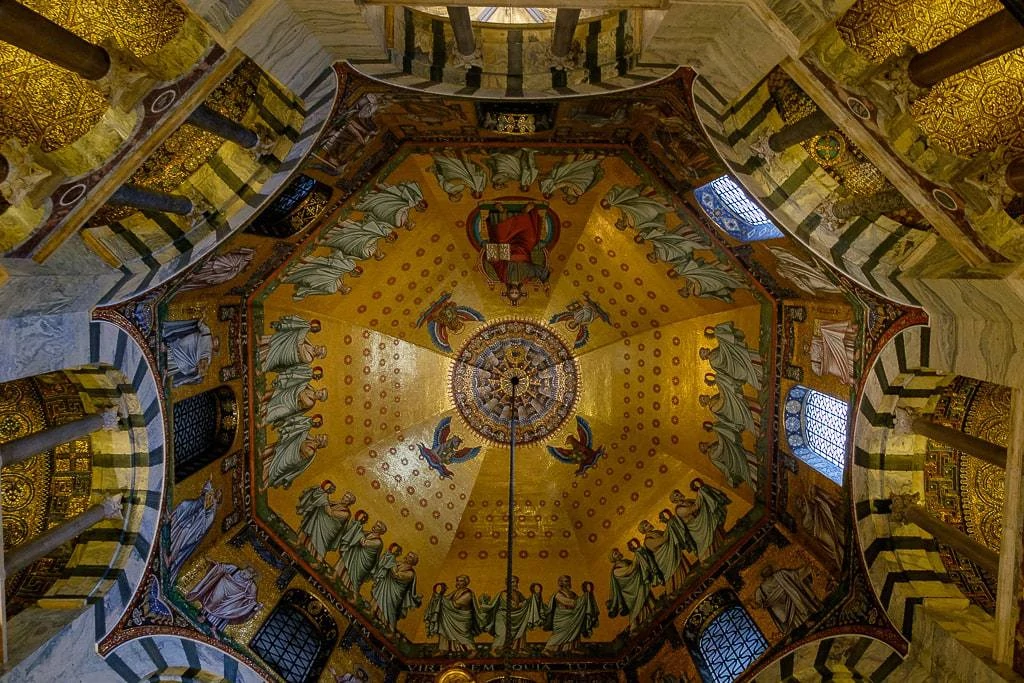
One of the most beautiful cathedrals in Germany is located in the historic city of Aachen. Aachen Cathedral is a Roman Catholic church and is famous for the stunning octagonal basilica located inside, alongside being the resting place of the Holy Roman Emperor Charlemagne who spent his later years in Aachen.
Built in the 8th century, the cathedral is one of the most important and oldest cathedrals in Europe and was inscribed as a UNESCO world heritage site on the very first list of 12 sites published in 1978.
The original cathedral was built in the Byzantine style, with a gothic extension built years later. And the stained glass of the gothic extension is modelled after the Sainte-Chapelle chapel in Paris.
The space inside the cathedral is truly unique and visitors will find themselves spending most of their time looking up at the incredibly mixed architectures of the building.
While the cathedral is one of the biggest drawcards for visitors to Aachen, the old town centre that surrounds the cathedral is a beautiful area to explore. There are countless shops and winding ancient streets to wander through, not to mention the wurst stands and bars!
One of the best times to visit Aachen is in the run-up to Christmas when the entire old town centre turns into a huge Christmas Market.
Bastei Bridge, Saxon Switzerland National Park
Explored by Elisa from World in Paris.
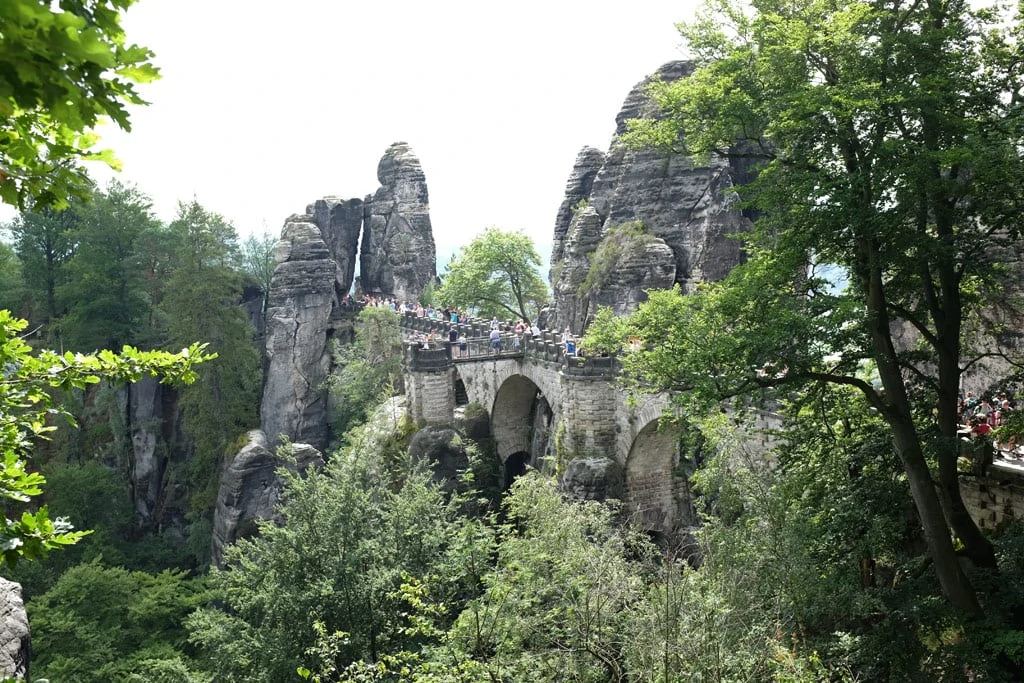
The Elbe Sandstone Mountains is an amazing natural area located by the river Elbe, well known for its rocky formations and beautiful forests. The Elbe Sandstone Mountains are part of the Saxon Switzerland National Park, in the German state of Saxony.
In the national park, you’ll find the famous landmark: the Bastei Bridge. This sandstone bridge crosses a deep precipice surrounded by spectacular rock formations. It’s a pretty impressive setting, popular with tourists since around the 19th century, although the original wooden bridge was replaced in 1851 but today’s sandstone affair.
Visiting the Bastei Bridge is the most popular day trip from Dresden, so it is always crowded with day trippers and big groups. There are many hiking paths starting from the bridge – this area is part of the famous Painters’ Hike – and once you start walking the crowds will disappear. If you want to visit only the bridge, avoid weekends and holidays for a better experience.
Haus Römer, Frankfurt
Explored by Nisha and Vasu from Lemonicks
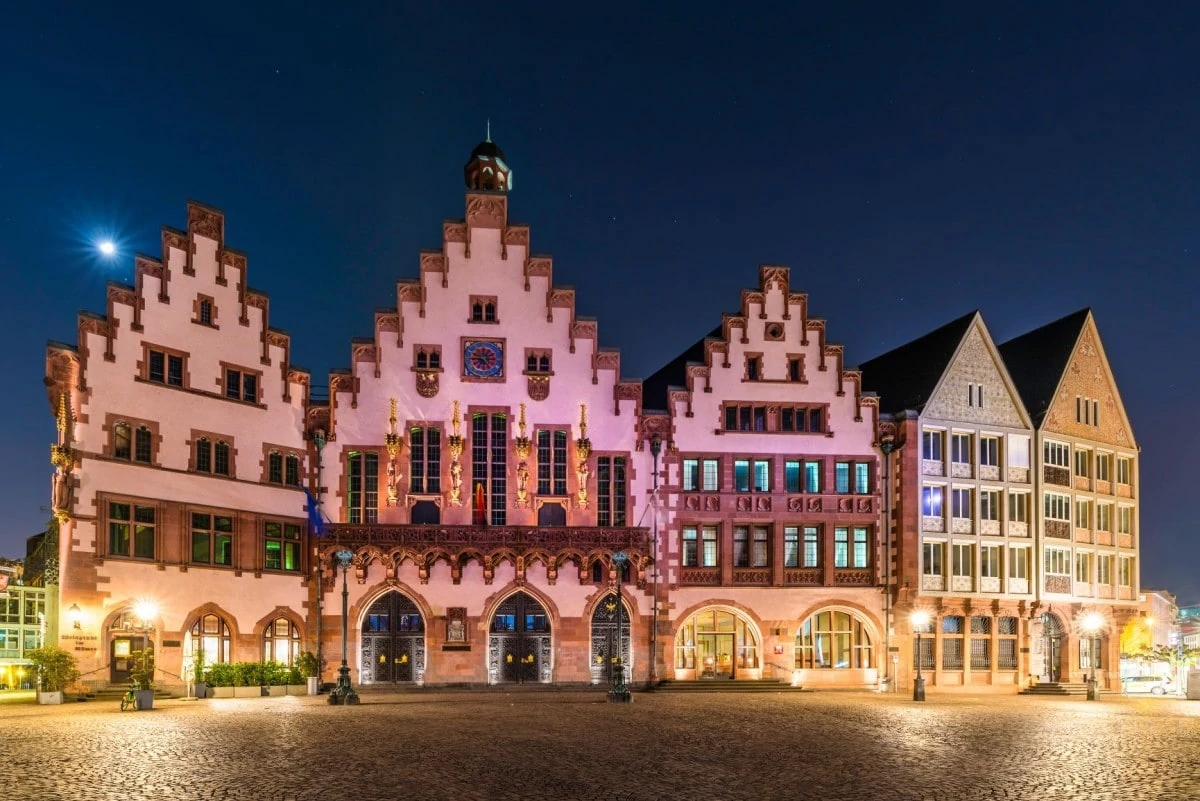
If you ask us for the best things to see in Frankfurt, the Römer has to be top of the list! The Römer Haus is Frankfurt’s most iconic landmars and is one of the finest examples of Fachwerkhäuser or half-timber house which is still standing today.
Around the late 14th century, the existing city hall of Frankfurt was found inadequate for this fast growing and prosperous city so the Frankfurt council decided to buy a few adjoining buildings from the merchants who owned them to expand it. Haus Römer, owned by the prominent Römer family, was one of them.
Römer has been renovated many times during its life and as of now is a three-story structure, complete with a balcony running the full length of the facade. The balcony is a comparatively new addition to the Haus, most likely added to let the visiting dignitaries have the best view of the Römersberg square where events are frequently held.
Inside Römer there are several rooms for various functions and banquets. The best known is the Kaiseraal (Emperor’s room), which is ornately decorated and is a must-visit for any tourist. Interestingly, anyone can hire these halls for their private functions or events too.
Contrary to many people’s belief, Römer Haus is not a museum and even now remains a fully functional Rathaus (City Hall). So much so that many couples get their marriage certified in the halls of this beautiful building.
Recommended: Check out what makes the list of the best Croatia landmarks.
Elbphilharmonie, Hamburg
Explored by Helen from Helen On Her Holidays
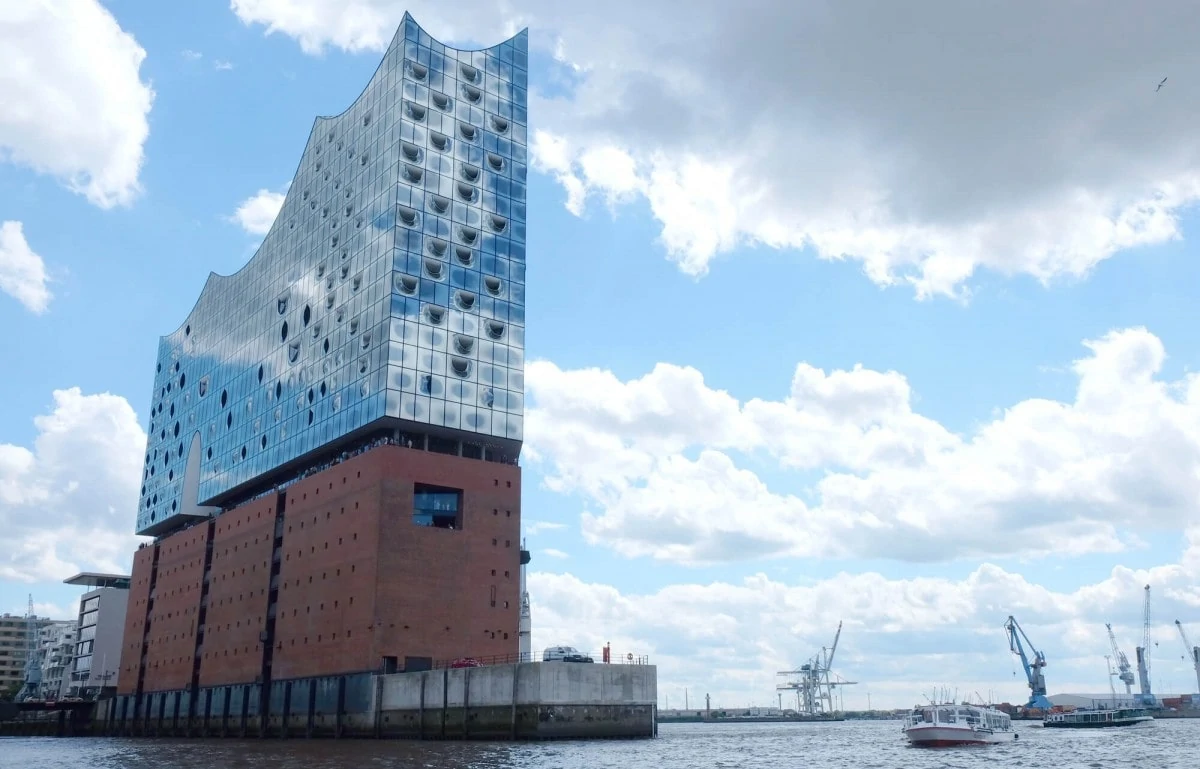
The Elbphilharmonie concert hall in Hamburg is one of Germany’s newest landmarks and definitely one of the top things to do in Hamburg. The Elbphilharmonie opened in 2017 and is part conversion of an old brick warehouse, part futuristic new build. The new section sits on top on the old, looking for all the world like a great ship – particularly appropriate since the Elbphilharmonie points out into the Elbe river, one of the world’s most important shipping lanes.
Visiting the Elbphilharmonie is easy. You can either attend one of the concerts held here, or if you aren’t lucky enough to get tickets, you can visit the viewing platform. The Elbphilharmonie has a viewing platform that extends all the way around the building with amazing views in every direction. If you look one way you can see the UNESCO-listed warehouses of the Speicherstadt district. In another direction you can see the church spires of Hamburg’s historic centre. And looking out down the Elbe river you can see gigantic container ships cruise by, laden with goods from all over the world.
The best views of the Elbphilharmonie are across the rooftops of the Speicherstadt and from the river. There are lots of harbour tours available, or you can take the number 72 ferry which goes right past. There’s also a wonderful view from the end of the Sandtorkai landing stage.
Frauenkirche, Dresden
Explored by Stephanie from History Fan Girl
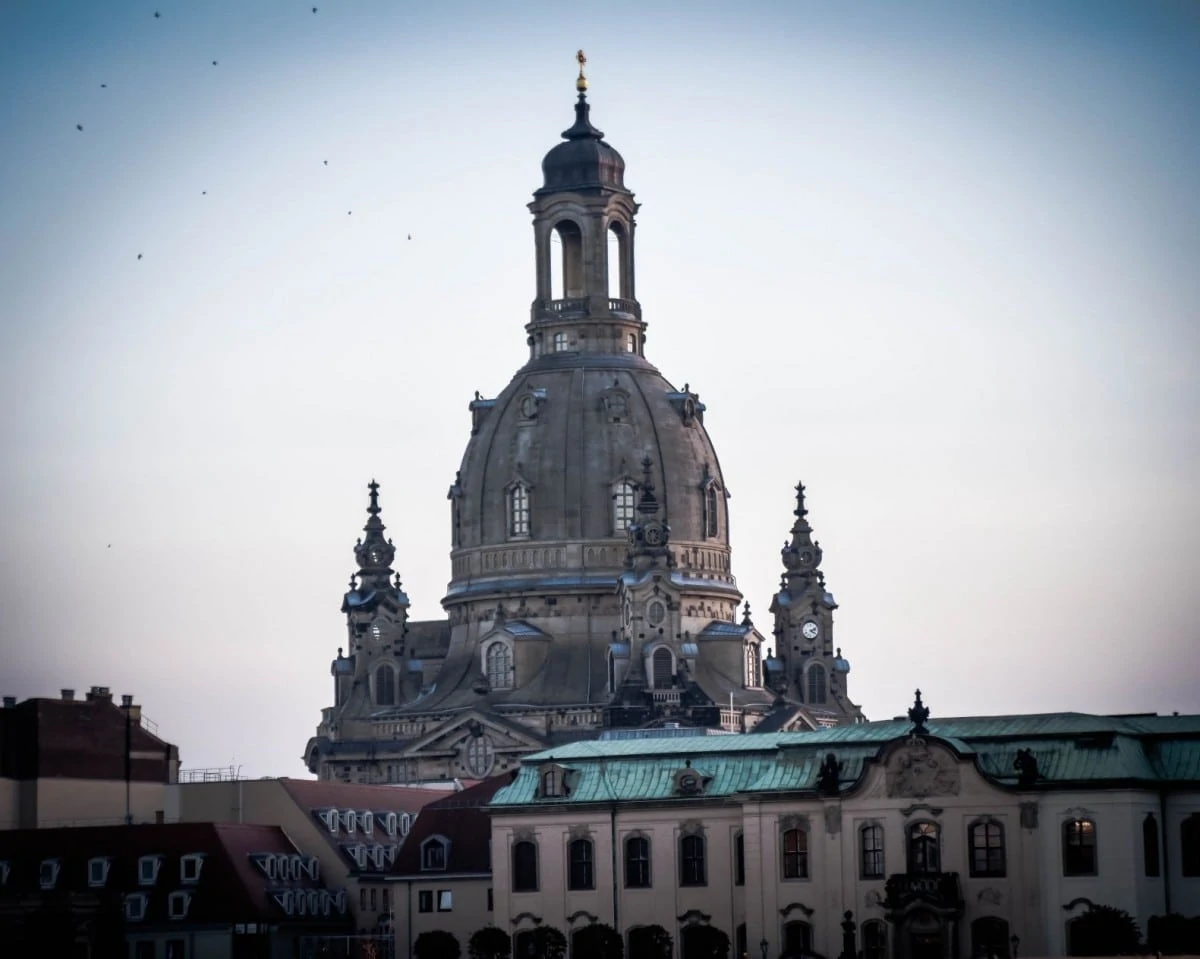
The Frauenkirche in Dresden is a special building. Built in Baroque Lutheran style with gorgeous frescoes on the interior, the Dome is simply stunning and is one of the largest in Europe. The original was built during the eighteenth century, but it was destroyed during the Allied bombing of Dresden during World War II. It then stood in ruins for half a century, serving as a war memorial.
Since so much of Dresden was destroyed during the war, the East German government had to make choices about what to rebuild and what to leave in rubble. After Germany’s reunification, the process of rebuilding started, with the Frauenkirche being top of the list.
It’s amazing to think that this entire building (and almost all of the Altstadt) is a reproduction of the earlier buildings. You would never know just from walking around that everything is actually only a few decades old. When in Dresden, you simply must go on a tour of the church. You can go on an audio or guided tour, based on your preferences and schedule. You should also enjoy a drink or a meal on the Neumarkt Square out front. The view of the church from here is one of the prettiest places in Dresden.
Marienplatz, Munich
Explored by Reshma from The Solo Globetrotter
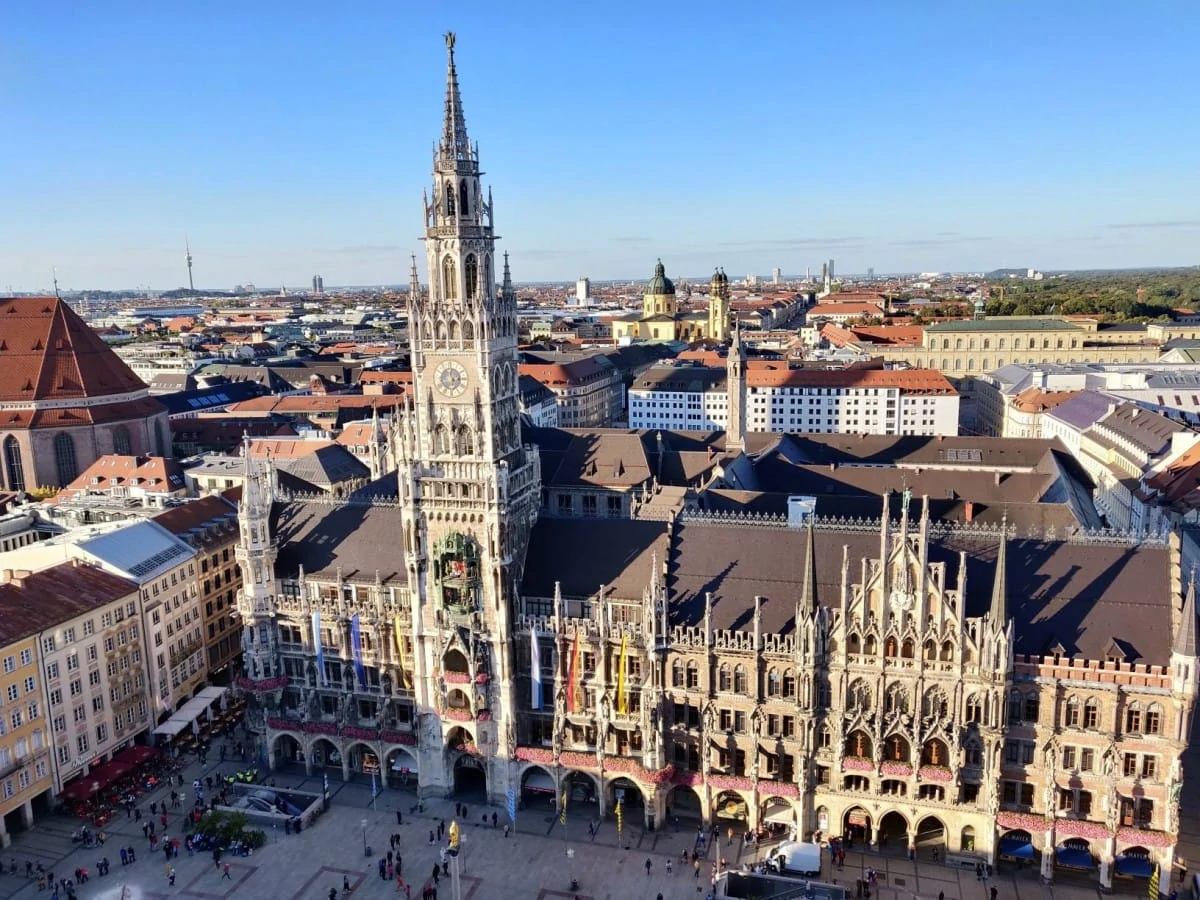
Marienplatz in Munich is one of the famous landmarks in Germany. Located in the heart of the city, the old town, it consists of many structures, all of which you must undoubtedly add to your Munich itinerary. It is the oldest part of Munich and dates back to over 700 years ago when the first group of Benedictine monks came here.
It is more popularly known as St. Mary’s Square, named after the Marian column built in 1638 to honour the patron of the city after the defeat of the Swedes. From here on, St. Mary became known as the protector of Bavaria. The most dominant of all buildings in Marienplatz is The New Town Hall or New City Hall (Neues Rathaus) to the north and the Old Town Hall to the east.
The New City Hall built in the medieval Gothic style of architecture consists of the current government offices, including the city council. This building is enormous, consisting of over 400 rooms and six courtyards. The most attractive feature of this hall is the richly-decorated facade facing the Marienplatz. The old city hall consists of a council room, dance house and a tower among other places, all of which were reconstructed after WWII.
Tip: Arrive at Marienplatz at 11.00am, noon or 5.00pm sharp to witness the Rathaus-Glockenspiel, the clock which consists of 43 bells and 32 life figures. During these times, they re-enact two stories from the 16th century Munich for passers-by.
Rathaus, Bremen
Explored by Anca from Dream Book and Travel
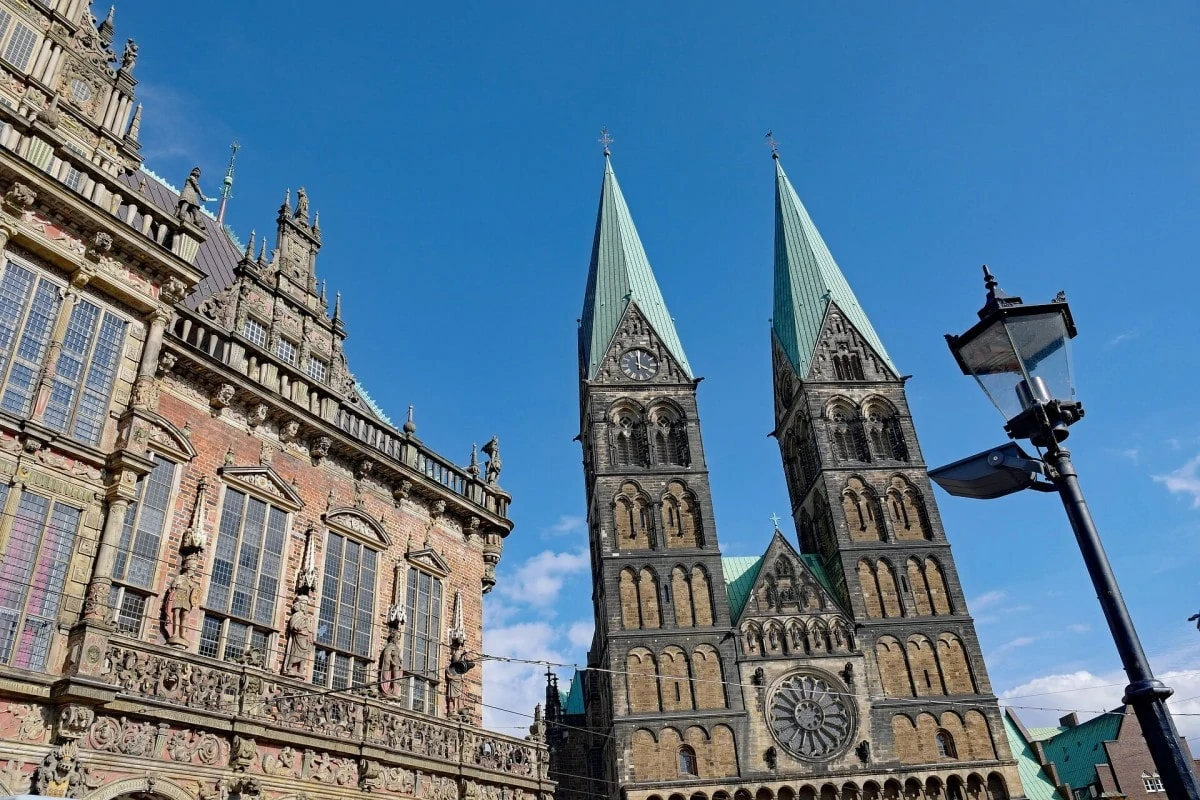
No visit to Germany is complete without a stop in Bremen, the fairy-tale town on the river Weser. Mostly known as home to the Bremen State Musicians, the famous Brothers Grimm tale, few know that Bremen is also Europe’s first coffee trading centre, and host to some amazing UNESCO World Heritage sites. There are enough things to do in Bremen to keep you occupied for a full weekend, I lived there 5 years myself, but the city can also be explored on a day trip.
Among its famous landmarks, The Bremen City Hall is the most important. Together with the Roland statue – a symbol of free trade and of the city of Bremen itself – the town hall combines elements of Brick Gothic and Weser Renaissance architecture.
You’ll find both landmarks in the historic market square opposite of the Bremen Cathedral, a fine example of Romanesque and Gothic architecture.
The gothic town hall itself was built in the 1400s when the development of the town was at its height and was expanded in later centuries. The medieval Upper Hall (Obere Rathaushalle) is still used for council meetings today and it is well worth a visit.
Once the sightseeing is done, make sure to stop at the Bremen Ratskeller (literally – the cellar of the city council) a tavern and gourmet restaurant hosting the world’s largest collection of German wines.
Heidelberg Castle
Explored by Diana from Travels in Poland
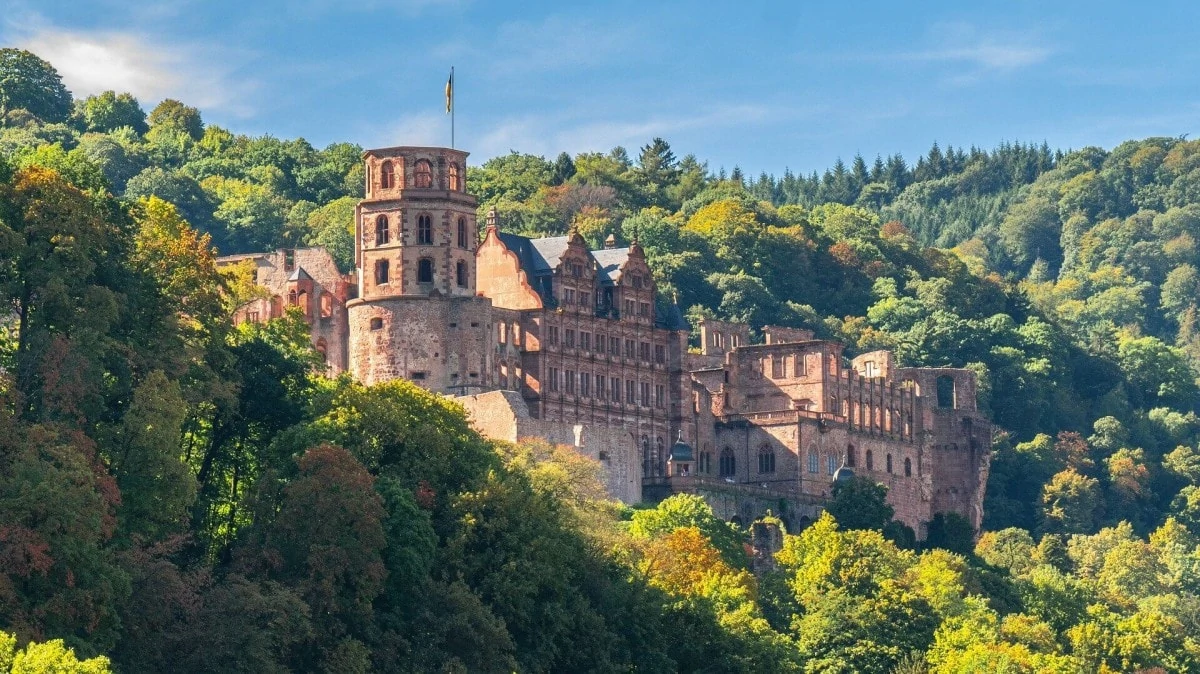
Located in the well-known southern town of Heidelberg, Heidelberg Castle is one of the most popular and iconic attractions in southern Germany. The town itself is a university town and sits on the beautiful Neckar River. A stroll along the river and up to the ruins of the castle is a fantastic way to spend the day in Heidelberg.
The ruins consist of several buildings, many of which are not accessible due to their crumbling nature. The history of the schloss itself is fascinating – a prince used it as a residence for quite some time, however once the castle was destroyed by lightning it became uninhabitable.
Tours are required and are easily booked at the visitor’s centre. Tours are available in various languages, though English and German are the predominant ones on offer, and they take you through several of the buildings and ends in the infamous wine cellar. The schloss has an underground wine cellar that rivals some of the best in the world. In fact, the world’s largest wine barrel is located in the cellar.
In addition to the cellar, there are also gardens and an apothecary museum that can be enjoyed. When visiting at certain times in the summer, there are beautiful lighting displays with fireworks that take place and are a spectacular sight to behold.
Porta Nigra, Trier
Explored by Wendy from The Nomadic Vegan
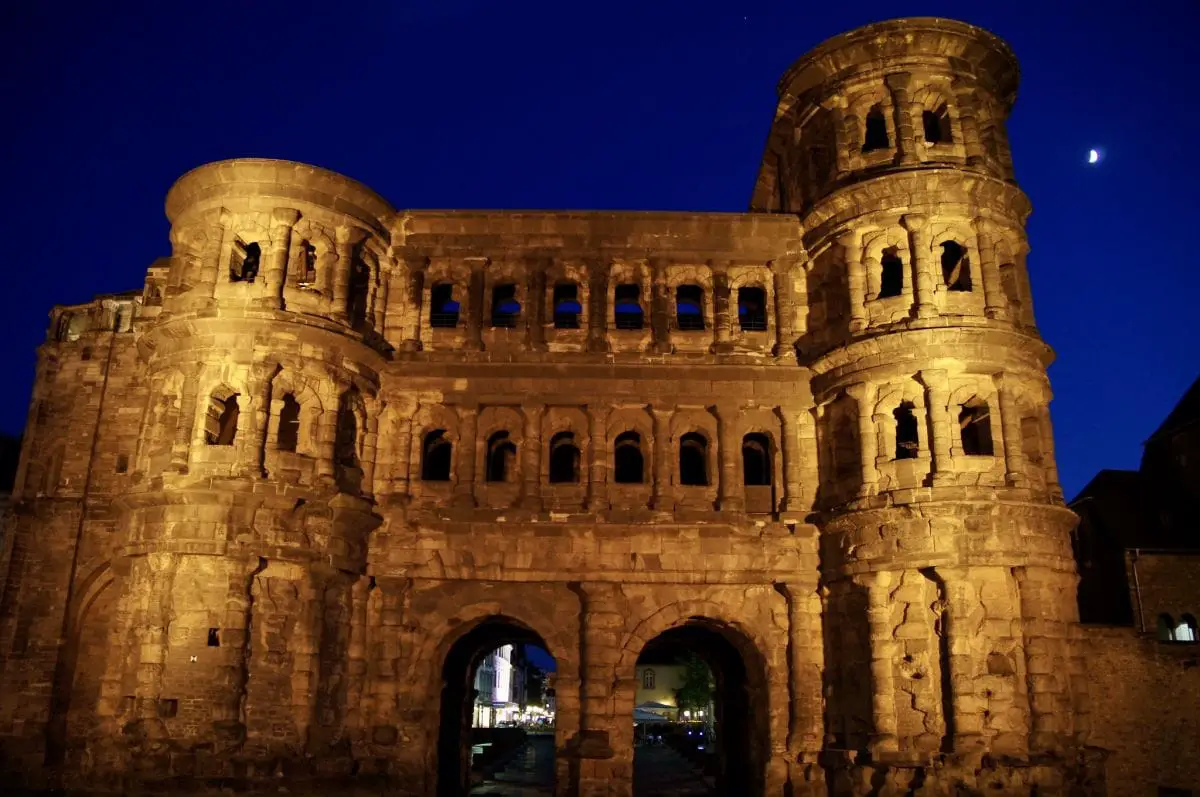
The name of this 2nd-century AD city gate, “Porta Nigra”, means “Black Gate” in Latin. And while the monument has rightfully earned this name from the dark soot that has accumulated on it over the centuries, the original colour of the sandstone would have been a much lighter grey. Porta Nigra is the best of several notable ancient Roman monuments in Trier.
In fact, of all the ancient Roman gates still standing across the former Roman Empire, this one is considered to be the most impressive. You won’t see anything like it even in the historic city center of Rome itself. Of the four Roman gates that protected Trier on each of its sides, Porta Nigra is the only one that still exists. It has been designated as a UNESCO World Heritage Site, together with Trier’s other Roman monuments and the Cathedral of St Peter and Church of Our Lady.
In the 11th century, the gate was converted into a church. It was then renamed St. Simeonkirche after a Greek hermit named Simeon who decided to escape the materialism of civilization by isolating himself in the gate’s east tower. After Simeon’s death in 1035, a monastery was built next to the Porta Nigra in his honour. This monastery, the Simeonstift, is now the city museum and holds artefacts covering 800 years of Trier’s history.
By paying an entrance fee of four EUR (4.50 USD/3.50 GBP), you can climb to the third level of the gate for fantastic views over the old city.
Berliner Dom, Berlin
Explored by Lee and Stacey from One Trip at a Time
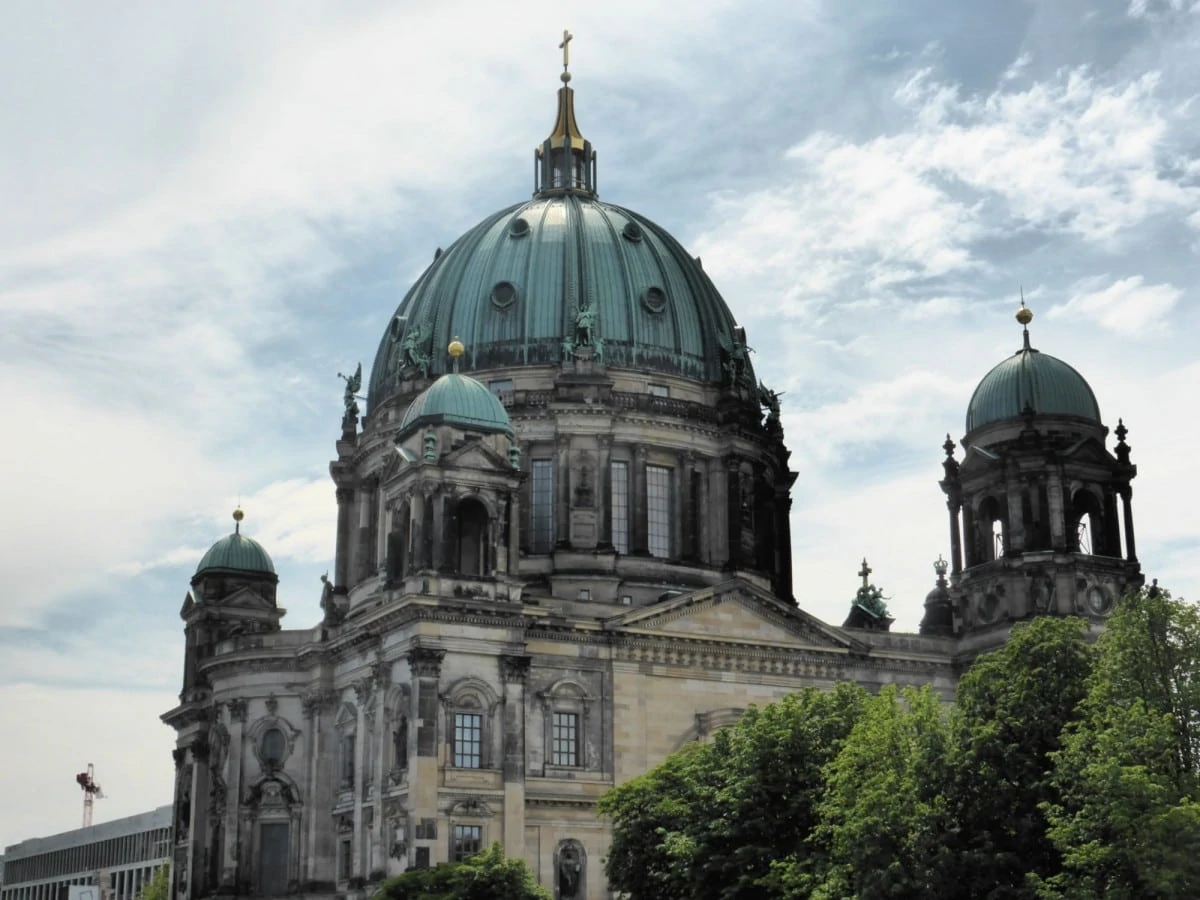
Built between 1894 and 1905, the Berliner Dom (Berlin Cathedral) was heavily damaged during World War II and remained in ruins until 1973. At that time extensive restoration work began and the cathedral reopened in 1993, restored to its former glory.
Berliner Dom is the city’s grandest and most important Protestant church and is a must-do for your visit to Berlin. Designed in the Italian Renaissance style, its beautifully rusted copper dome looms over the UNESCO World Heritage site of Museum Island, where it is located alongside the Spree River.
Inside the cathedral is as beautiful, if not more so, than the outside. The lush interior is a soft cream-coloured stone which allows the intricate carvings and gilded mosaics inside the dome to really shine. Add this beauty to the wonderful music from the largest pipe organ in Germany and it is easy to see why so many concerts are held here.
For a closer view of the interior of the dome you can climb the 270 steps to the viewing gallery which also takes you outside for splendid views from the cupola of the river and surrounding area. The stairs can be quite steep and narrow in places but there are also several places along the staircase to stop and catch your breath.
After seeing the views from the top, descend into the crypt which includes over 90 sarcophagi and the tombs of Prussian royalty, Friedrich I and Sophie Charlotte, cast beautifully in gold-plated tin and lead.
Wieskirche, Bavaria
Explored by Oliver from Go Aciu
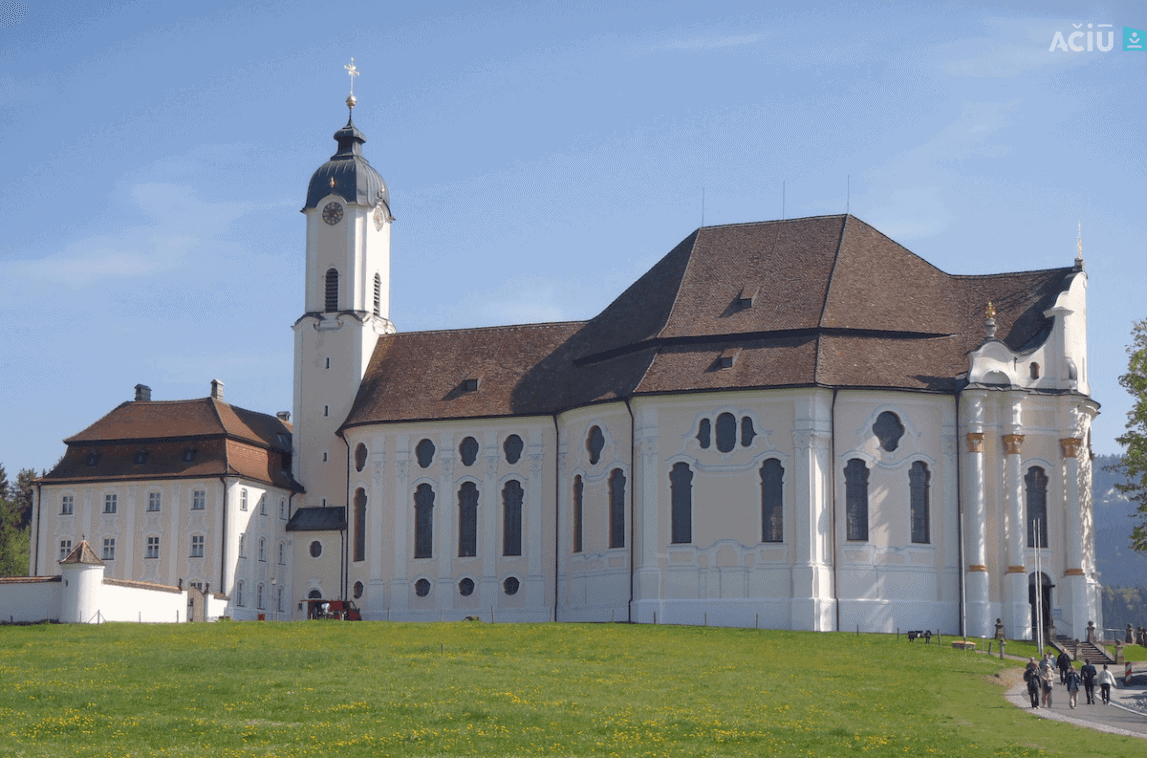
One of the most visited sites in Germany in southern Bavaria is Neuschwanstein Castle. What most people don’t know is that only 10 minutes from there (and just 90 minutes from the Bavarian capital and so a great day trip from Munich) in the foothills of the Alps, in the middle of farmers’ fields, rises this UNESCO World Heritage Site.
It is well worth a small detour. To get there, take the B17 that leads to Schwangau until you hit the town of Steingaden and turn east onto Ammergauer Str (St.2059). In 7.5 km you will see St.2559, turn south onto it. In about four minutes, you will find a church, but it’s not just any little church.
The Wieskirche (Pilgrimage Church of Wies) finds itself here in this isolated spot because back in 1738 an old wooden figure was seen producing tears. As with such phenomena, people came from far and wide to see it (pre-Instagram days of course!).
A chapel was built around the wooden statue in 1740. More people came, so many in fact, that between 1745 and 1754 they built the church that you see today.
It was designed in the Rococo style, which is known for its white and pastel colors, scrolling curves, and beautiful frescoes, with astounding amounts of detail. You absolutely have to experience this exquisite place for yourself, as it takes its rightful place as a must-see German landmark.
Zugspitze, Bavaria
Explored by Darek and Gosia from DarekandGosia.com
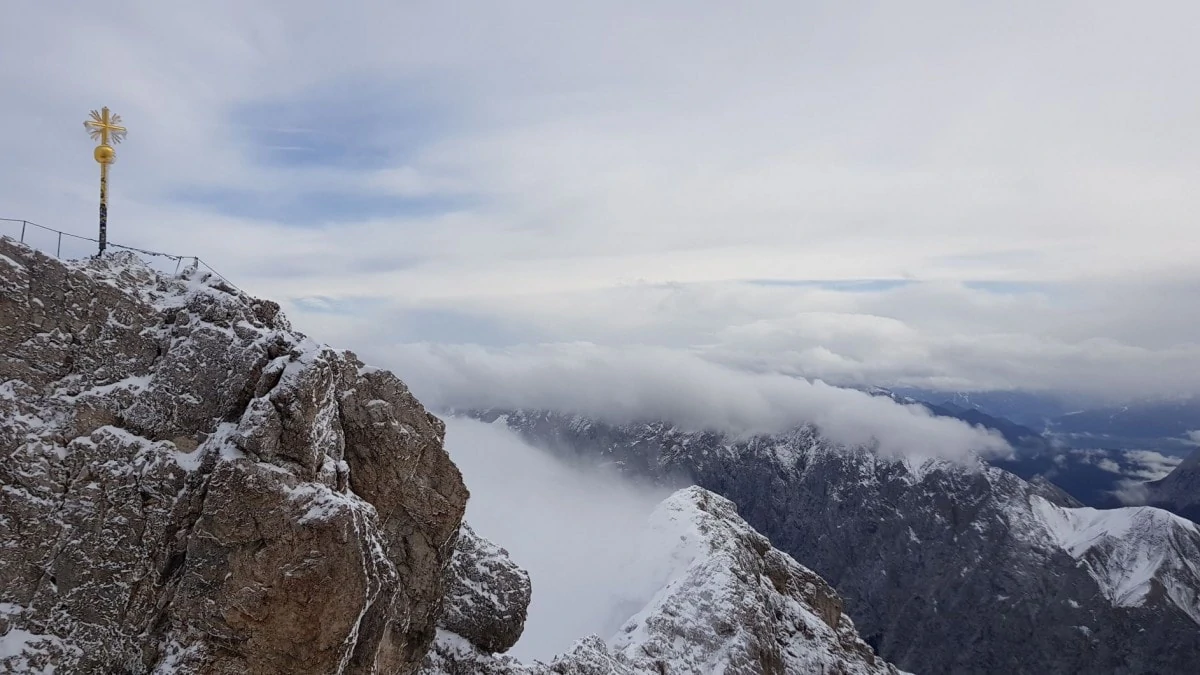
Looking for a more unique experience in Germany, to really get to the ‘top’ of the country? You should visit Zugspitze!
Zugspitze, the highest mountain peak in Germany, is 2962 meters above sea level and is located in the Bavarian Alps, on the border between Austria and Germany.
You don’t have to be an experienced hiker to get to the top, all you need is 60 EUR (67.25 USD/53.50 GBP) for the ticket. It might sound expensive but it’s totally worth it! One of the attractions is that the train travels in a hollow tunnel inside the mountain getting you to the Schneefernhaus hotel (2645 m) before you change into a cable car to reach the higher part of Zugspitze. And yes, the views are breath-taking!
There is a little restaurant serving traditional German food – there is nothing better than Gulaschsuppe after a hike.
It is recommended to book at least half a day for this experience and the best time to visit is from late spring to early autumn. You will also have to remember that the weather can change very rapidly so you have to be prepared for different conditions.
BMW Welt, Munich
Explored by Nisha from Nerdy Footsteps
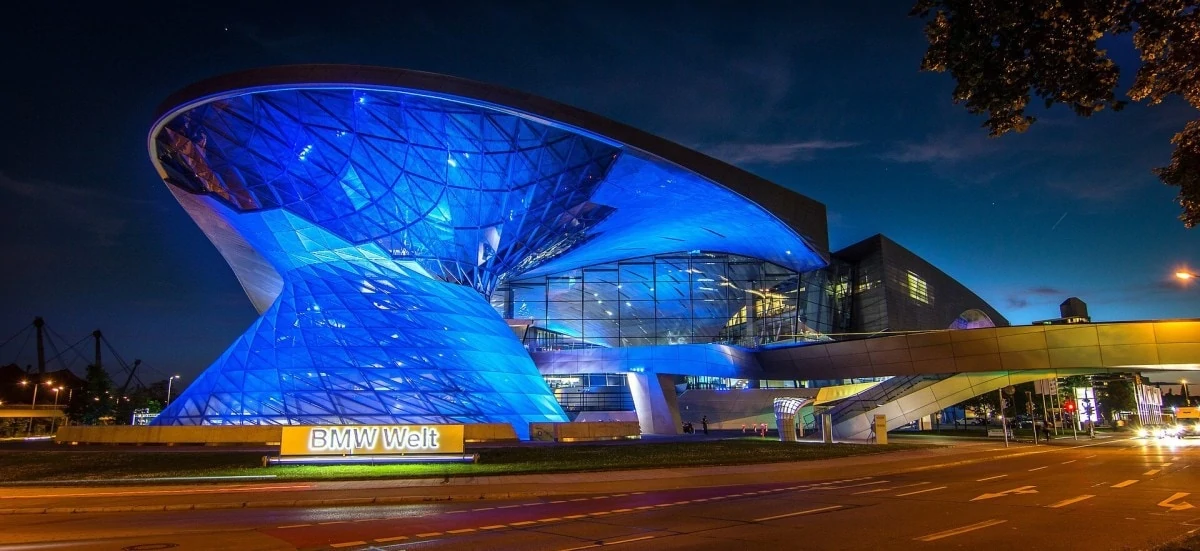
Germans have proved their mastery in designing automobiles over and over again. All the major manufacturers like VW, Porsche, BMW, Mercedes and Audi have museums and other exhibitions for car nerds to enjoy in Germany. With that in mind, it’s no surprise that BMW Welt (BMW World in English) is the most visited tourist attraction in Bavaria
BMW Welt hosts BMW, BMW i, BMW M, MINI, Rolls-Royce Motor Cars, and BMW Motorcycles. Customers can actually choose to collect their new BMW fresh off the line at BMW Welt if they wish. Visitors can take a look at, touch, sit, and take unlimited selfies in all of BMW’s production models. And, if that doesn’t satisfy your BMW desires, you can even rent a BMW model for a few hours!
The building itself is an architectural wonder. It was designed by the Austrian company Coop Himmelb(l)au and supports a 16,000 square metre roof with only 11 columns. Corridors are hung from the ceiling to have more open space.
There are guided tours available for BMW Welt, the Museum, and even the Production Plant, but you can also use an app for more information.
And the best part of it all? The entrance to this car haven is absolutely free. I highly recommend visiting the BMW Welt and the neighbouring Olympia park, even if you are only visiting Munich for a weekend.
Hohenzollern Castle
Explored by Maartje from The Orange Backpack
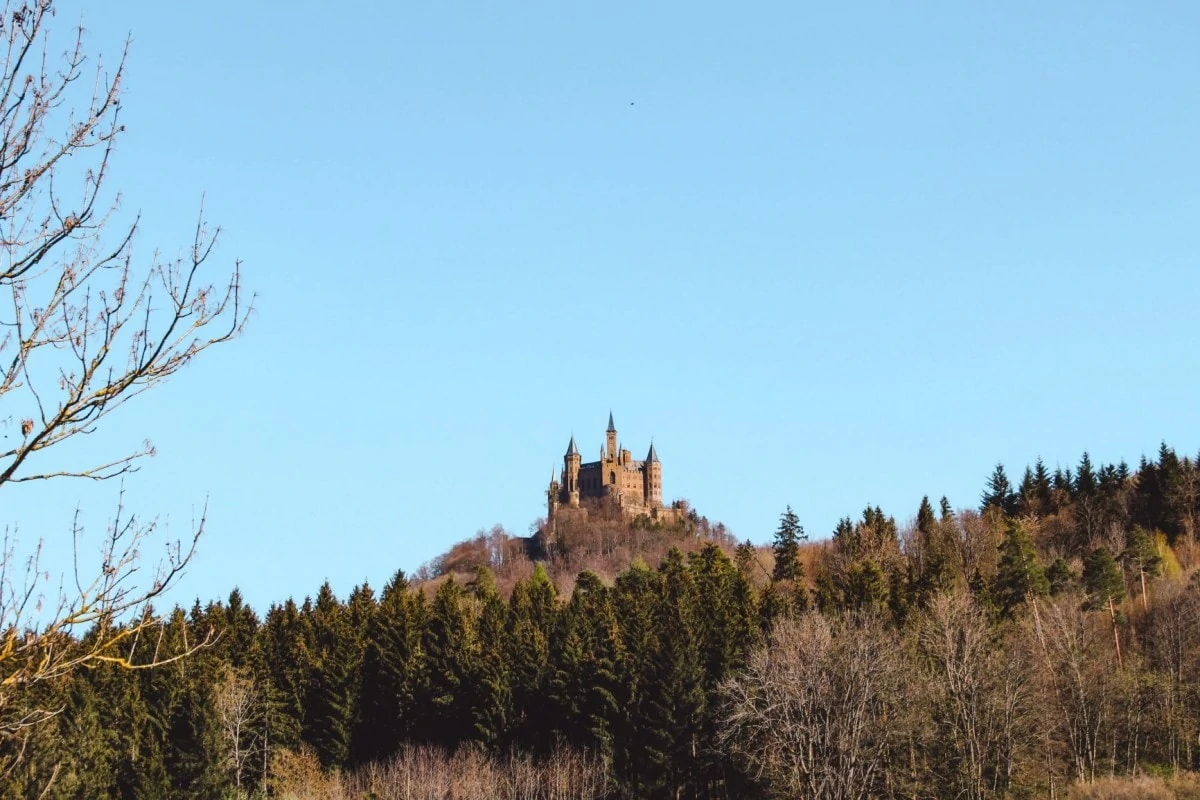
Hohenzollern Castle could be straight out of a fairy-tale. Set high atop a steep hill, covered in trees, this spectacular castle is punctuated by romantic turrets and fortifications that make it seem like it’s lifted out of a storybook.
Still owned by the old royal family, the Hohenzollern Princes, you’ll see their family flag flapping in the wind as you ascend the hill, either by walking, via their shuttle bus or by heading there early to grab the nearby parking spots.
While this exquisite castle is beautiful to behold from the outside, it’s even more gorgeous once you’ve entered its doors. The authentic interiors and furnishings will transport you back in time as you appreciate highlights like the Count’s Hall, a room with a ceiling fit for a cathedral, complete with gothic arches and rib vaulting.
Tip: While you’re visiting the Castle, definitely try to combine your visit with a jaunt to see some of the other beautiful attractions in the Black Forest Area, like Heidelberg, Freiburg, Titisee Lake and the Triberg Falls.
Reichstag Building, Berlin
Explored by Melissa from Thrifty Family Travels
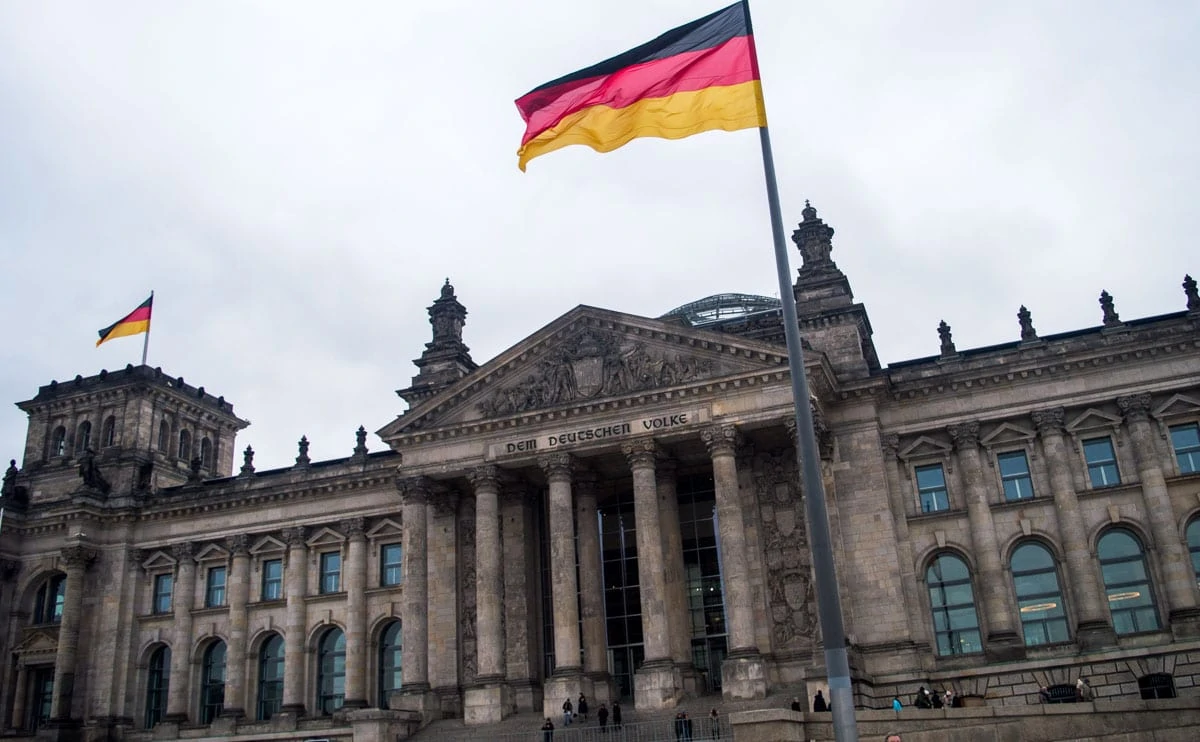
In terms of iconic buildings in Berlin, they don’t get much more famous than the Reichstag Building. This historical building is one of the most famous Berlin landmarks and a visit here is one of the most popular things to do in Berlin.
This beautiful architectural wonder is currently the home to the German parliament. Visitors to the building wind their way up around the spiral ramp of the glass dome, enjoying fantastic views across the city as they go. The dome sits right above parliament and visitors can glance down getting a bird’s eye view into the proceedings below.
The Reichstag was built in 1894 and was home to the country’s parliament until 1933 when it was severely damaged by fire. This fire plays an important role in German history, as this was the pretext for Hitler to suppress dissent. The building was then damaged even further during the Second World War.
Restoration of the building was completed in 1964, however it was not used for the German Parliament again until 1999 after a further restoration and redesign of the building.
While entry into the building is free, you will need to book online in advance. With your entry you receive a free audio guide that tells you more about the German parliament, many of the other Berlin landmarks and some insight into the troubled history the city has faced.
The Rhine Tower, Dusseldorf
Explored by Chrysoula from Travel Passionate
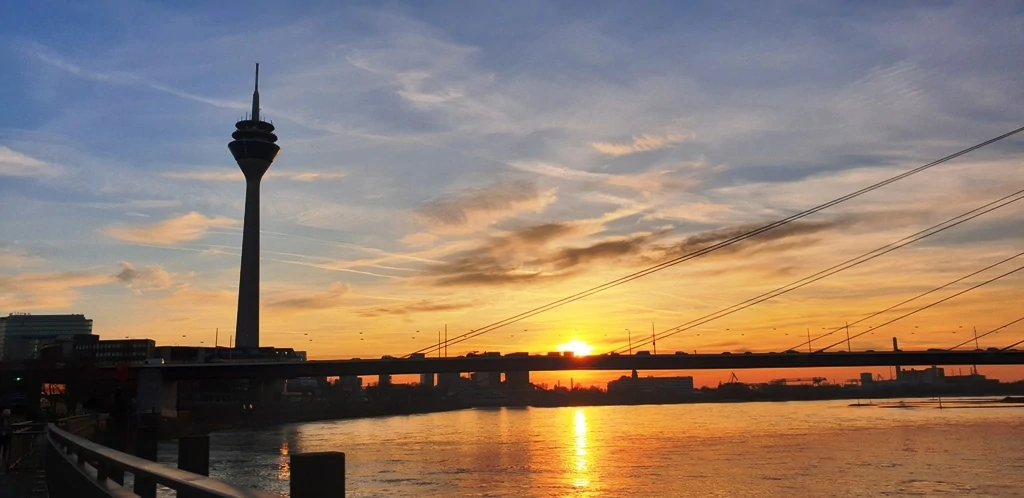
The Rhine Tower in Dusseldorf is one of the most famous landmarks in the city, with the recognisable spire piercing the skyline with its height and impressive structure. This telecommunications tower was built between 1979 and 1981 and lies in the heart of Dusseldorf as a city icon that is loved by locals and tourists alike.
Standing at 240m, the Rhine Tower is the tallest building in Dusseldorf and visitors can explore the observation deck (at 164m up) for wonderful panoramic views of the city. The tower boasts vistas out over the Rhine River, Old Town, the MedienHafen and the State Parliament building, and on a clear day, travellers can even see as far as Cologne Cathedral!
The observation deck of the Rhine Tower is open daily throughout the year from 10.00am to 11.30pm, so visitors can choose whether they want to travel up during the day to see the city or at night to witness the sunset and the buildings illuminated during the hours of darkness.
Tickets to the Rhine Tower observation deck cost 9 EUR (10 USD/8 GBP) or 5 EUR (5.50 USD/4.50 GBP) for late-night tickets (children go free), or guests can choose to visit the tower’s on-site bar and restaurant.
Charlottenburg Palace, Berlin
Explored by Ashley from Impact Winder
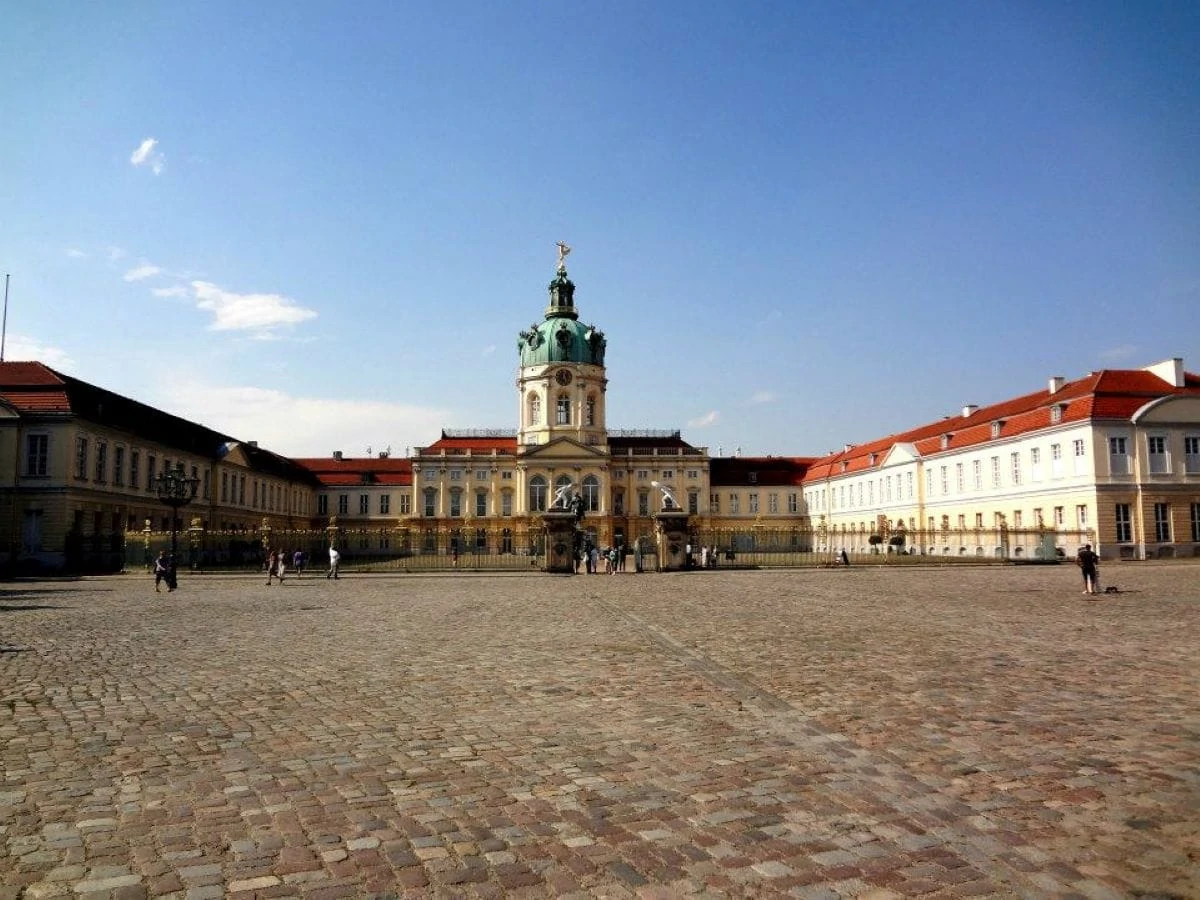
If you are visiting Berlin, a sojourn over to Charlottenburg Palace is a must, especially on a beautiful day. Once a summer residence of the Queen Consort of Prussia, it is now considered the most spectacular palace in Berlin. Constructed between 1695 and 1699, the palace was partly destroyed in 1943 by Allied bombs but has since been rebuilt and restored as much as possible.
Today, visitors can explore the staterooms, galleries, ballrooms, and Silver vault which holds the remaining pieces of the Prussian crown jewels. Visitors do require a ticket to enter the palace but entrance onto the grounds is free year-round. A multi-pass ticket is available if you want to visit all 5 building attractions at Charlottenburg.
If you want to save a little money on your trip and happen to be visiting Charlottenburg on a nice day, I recommend skipping the Palace tour and heading straight for the Palace Gardens. Here you can enjoy the stunning views of the Palace’s exterior as well as the French Baroque style garden as you stroll around Berlin’s few nature escapes.
If you are visiting Berlin over the Advent season, head to Charlottenburg Palace Christmas Market for a traditional German experience in a beautiful setting and tranquil atmosphere.
Brandenburg Gate, Berlin
Explored by Vicki from Vicki Viaja
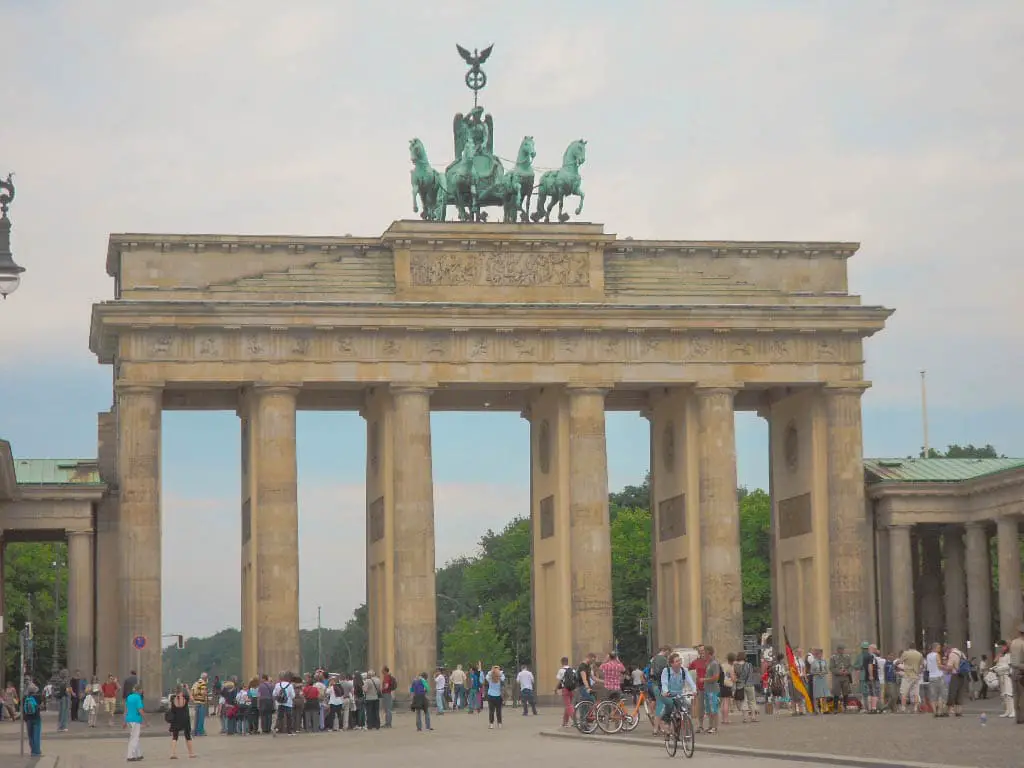
The Brandenburg Gate is probably the most iconic monument in all of Germany. It’s such a famous landmark that the gate can even be seen on the German euro coins. However, the importance of the Brandenburg Gate is not without reason.
During the time of the separation of Germany, the Brandenburg Gate was located directly on the wall. Therefore, it was clearly visible from both West Germany and East Germany. So, after the Cold War ended, it became a symbol of the reunification of the two German parts into a united country.
But this gate was already considered an important symbol in earlier epochs. It was built in the late 18th century under Prussian rule. Even the architectural influences of the Greco-Roman style of antiquity is no coincidence with this famous triumphal arch. This architectural style was chosen in order to portray the then Prussian ruler Friedrich Wilhelm II as a great influential ruler like Pericles from Ancient Greece.
Nowadays, the Brandenburg Gate is a must-see and essential stop on every Berlin itinerary as it is considered an integral part of Berlin. The gate is conveniently located in the Mitte district of Berlin, right in the city centre. Thus, a visit here can be easily combined with other essential sights that are just nearby, such as the famous Reichstag or the Holocaust Memorial.
German landmarks map
So, what did you think of our countdown of the most famous monuments in Germany? Let us know if we’ve missed any major German landmarks off the list by dropping a note in the comments below!
We’ve also got heaps more lists of landmarks if that’s your thing? From the most perfect places in Australia, the must-see monuments in England, iconic Italian landmarks, to beautiful buildings in Singapore, check out the full list here.
Want to save this for later? Then why not pin it…
